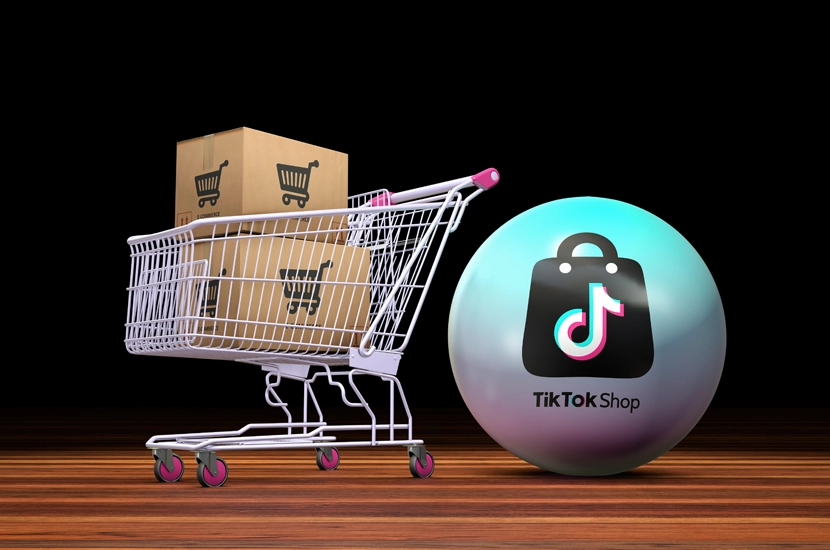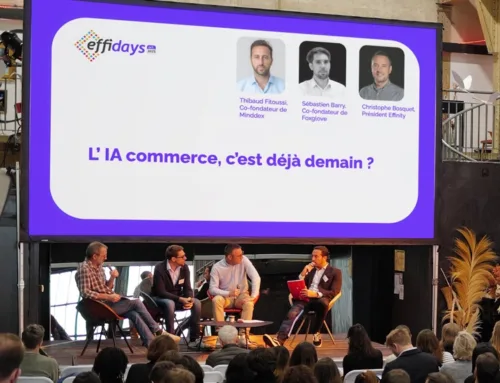While traditional e-commerce has been based on purchase intent for years, a new trend is overturning the codes of online sales: Discovery Commerce, which can be defined as a category of social commerce. And if there’s one platform where this mutation is taking hold at high speed, it’s TikTok.
With its immersive content, fearsomely precise algorithm and rapidly expanding ecosystem (TikTok Shop, live shopping, affiliate marketing), TikTok is no longer just a social network. It has become a commercial discovery engine. A space where the user had no intention of buying… but ends up doing so. Sometimes in a matter of seconds. Here’s how it works.
Discovery Commerce, a reverse logic
In traditional e-commerce, the web user is looking for a product. They know what they want. He enters a query in the search bar, consults the results classified according to an SEO algorithm, compares the offers, then buys. It’s an intentional logic. The user is already in a buying posture. Discovery Commerce is just the opposite. On TikTok, the user has no intention of buying. They’re there for entertainment, information and relaxation. And yet, he finds himself exposed to products seamlessly integrated into video content, in the course of a sketch, a product test or a haul (a video in which the creator shows what he bought during his last shopping session). The product isn’t waiting for him in a datasheet, it pops up in his content feed. They don’t look for it: they discover it. It’s no longer the customer who goes to the product. It’s the product that comes to them, through the content.
An algorithm that learns… to sell
TikTok’s strength lies in its recommendation algorithm, arguably the most powerful in terms of personalization today. Every interaction (like, comment, share, time spent on a video) feeds an automatic learning system capable of identifying a user’s tastes, intentions and affinities. And therefore, indirectly, his propensity to buy a given product.
In a Discovery Commerce strategy, the key is to train the algorithm to understand which types of content work with which audiences. The more relevant, engaging and well-scripted videos a brand produces, the more TikTok will push them to people likely to convert. It’s a virtuous circle: good content → better exposure → better sales → better signal for the algorithm → even more exposure.
And as TikTok now integrates direct sales functionalities (notably via TikTok Shop), it’s possible to go from discovery to purchase without leaving the platform.
From scroll to click: the art of provoking spontaneous purchases
What distinguishes TikTok from traditional e-commerce is the emotional and impulsive nature of the purchase. Where Amazon offers a utilitarian experience (buy fast, compare, get delivered fast), TikTok plays on surprise, enthusiasm and an emotional bond with a designer or a community. It’s the era of “shoppertainment”: a mix of shopping and entertainment, where we buy almost without realizing it.
Let’s take an example: a beauty influencer tests a new lip gloss in an authentic, well-edited shoppable video with good storytelling. She talks about its texture, shows the effect in natural light, gives her opinion. If this video performs well, it will be pushed to thousands (if not millions) of users who have shown an interest in make-up. A simple affiliate link to TikTok Shop turns enthusiasm into instant conversion. The product becomes secondary: it’s the story told around it that generates desire.
Growth 4 times faster than traditional e-commerce
According to a study by Euromonitor, Discovery Commerce is now growing four times faster than traditional e-commerce. This is due to a combination of factors:
- The explosion of short videos as the dominant format
- The prescriptive power of content creators
- Seamless integration of sales into social platforms
- The shift of new generations towards less rational and more emotional purchasing behaviour
And this phenomenon is not confined to TikTok: Instagram, YouTube Shorts, Pinterest, all are gradually integrating similar logics. But TikTok remains one step ahead, both technologically (thanks to its algorithm) and culturally (through its unique link with Gen Z and Millennials).
Discovery Commerce, a strategic opportunity for brands
For brands, the stakes are clear: adopting Discovery Commerce means adapting to new uses. It’s no longer enough to have a well-optimized product listing on Google Shopping. It’s now necessary to tell a story around your product, create engaging videos, collaborate with creators, test formats, analyze weak signals and adjust content on an ongoing basis. It’s a more organic strategy, less focused on immediate conversion, but one that creates desirability, attention and recurrence. This means :
- Produce native content designed for TikTok (authentic, short, emotional)
- Collaborate with influencers who know how to captivate their community and share the brand’s values
- Measure performance not just in terms of clicks, but also in terms of views, engagement rates and time spent on videos.
Discovery Commerce is not a fad, but an underlying trend
Discovery Commerce radically transforms the way brands think about their online presence. It’s no longer a question of capturing purchase intent, but of provoking it. TikTok, with its algorithm, immersive formats and growing integration of native commerce, is today the most advanced platform for activating this logic. For brands, it’s a unique opportunity to capture a new audience, increase average basket value through impulse purchases, and create brand preference through the power of content.
In 2025, if you don’t integrate Discovery Commerce into your strategy, you risk missing out on the shift to emotional, narrative and instant commerce. So don’t hesitate to call on our certified TikTok Shop experts to support you in this process.




